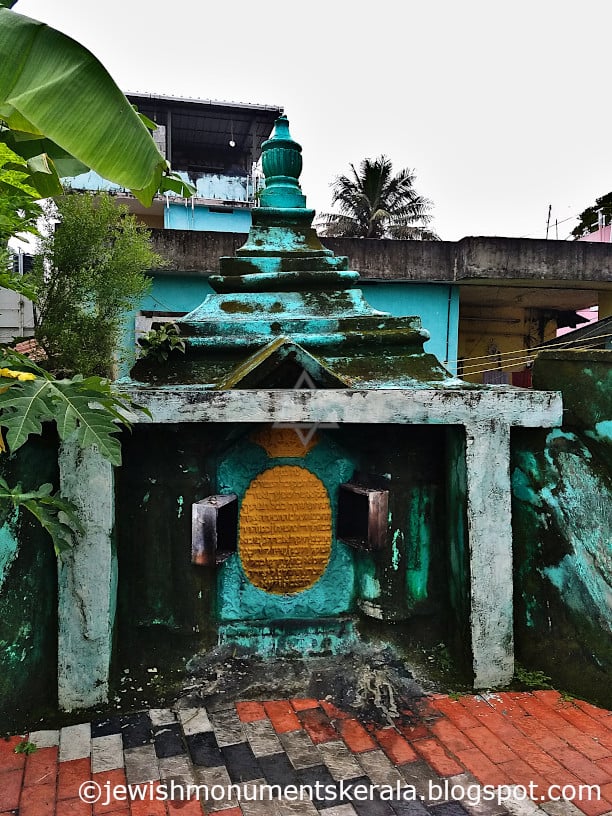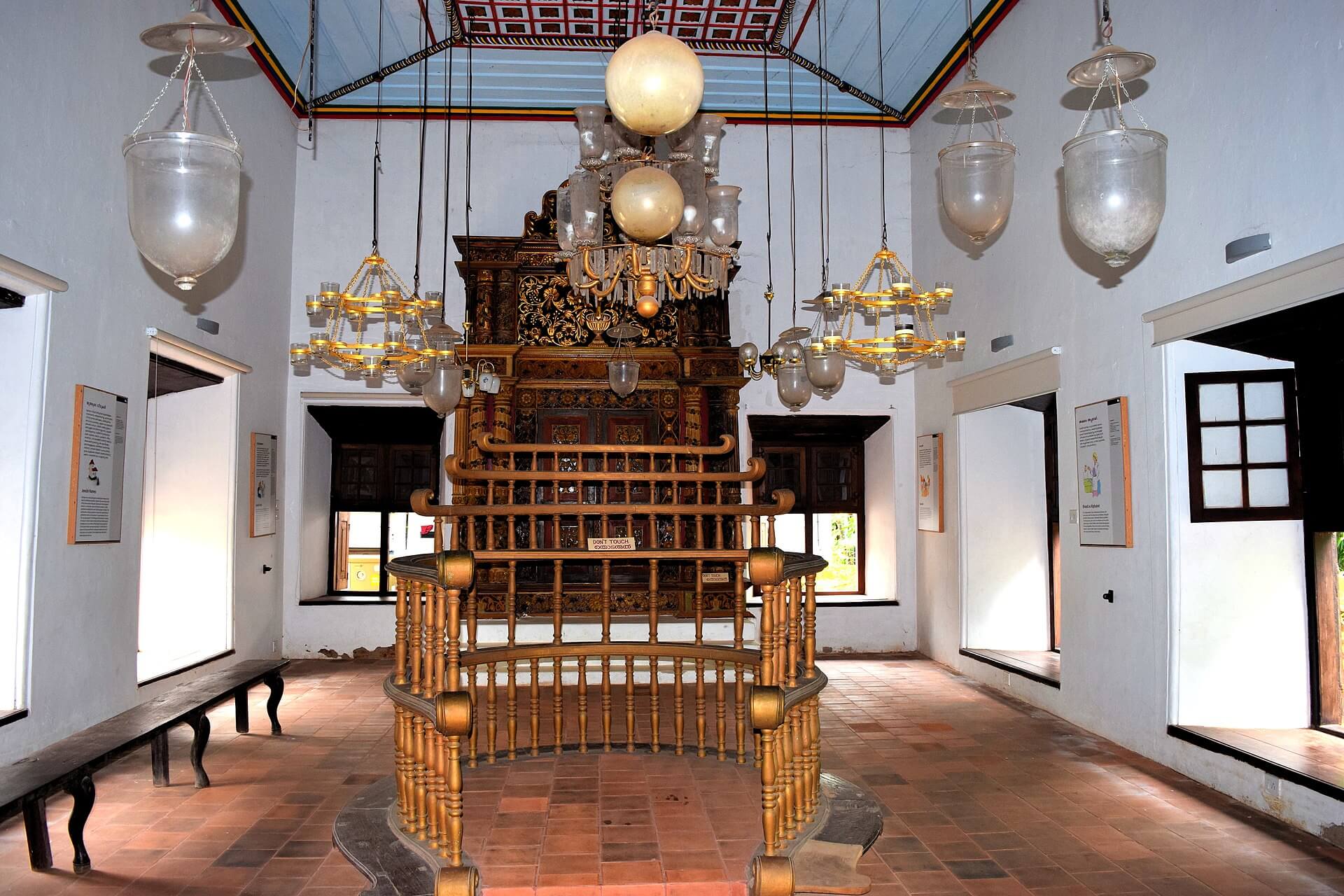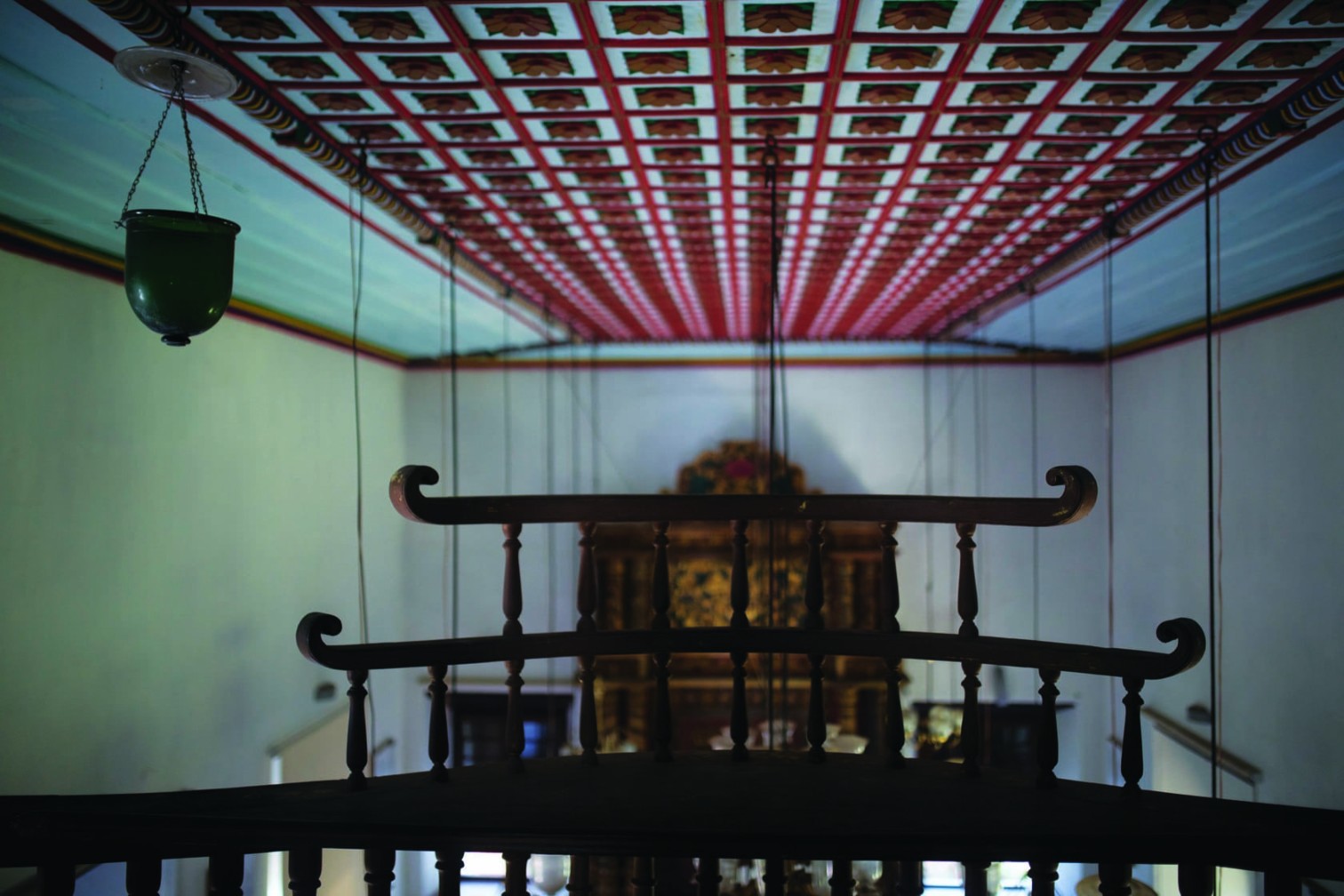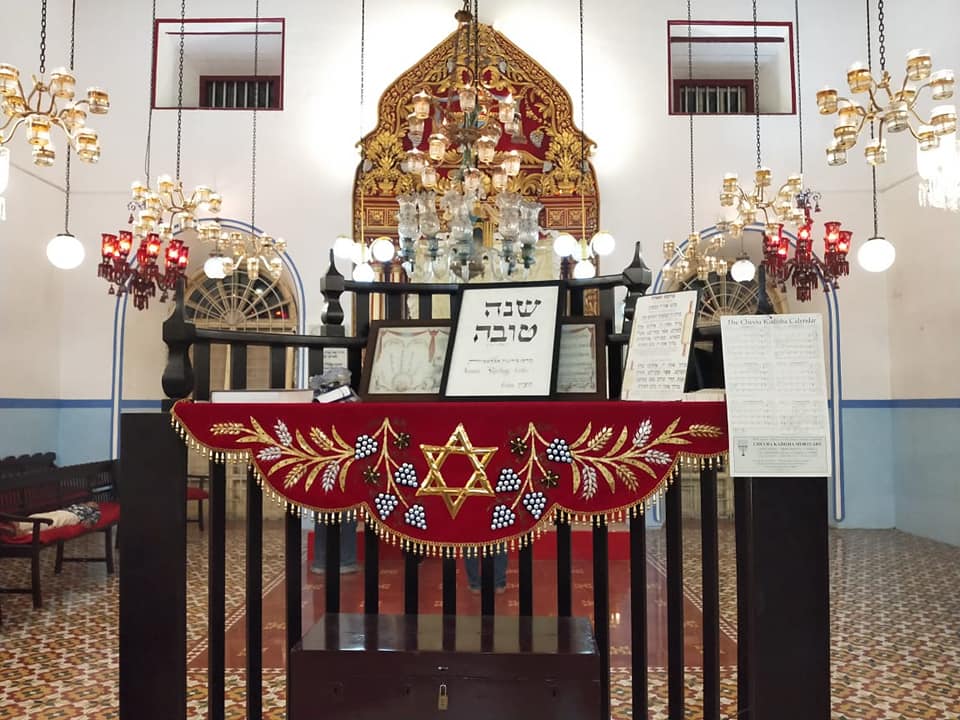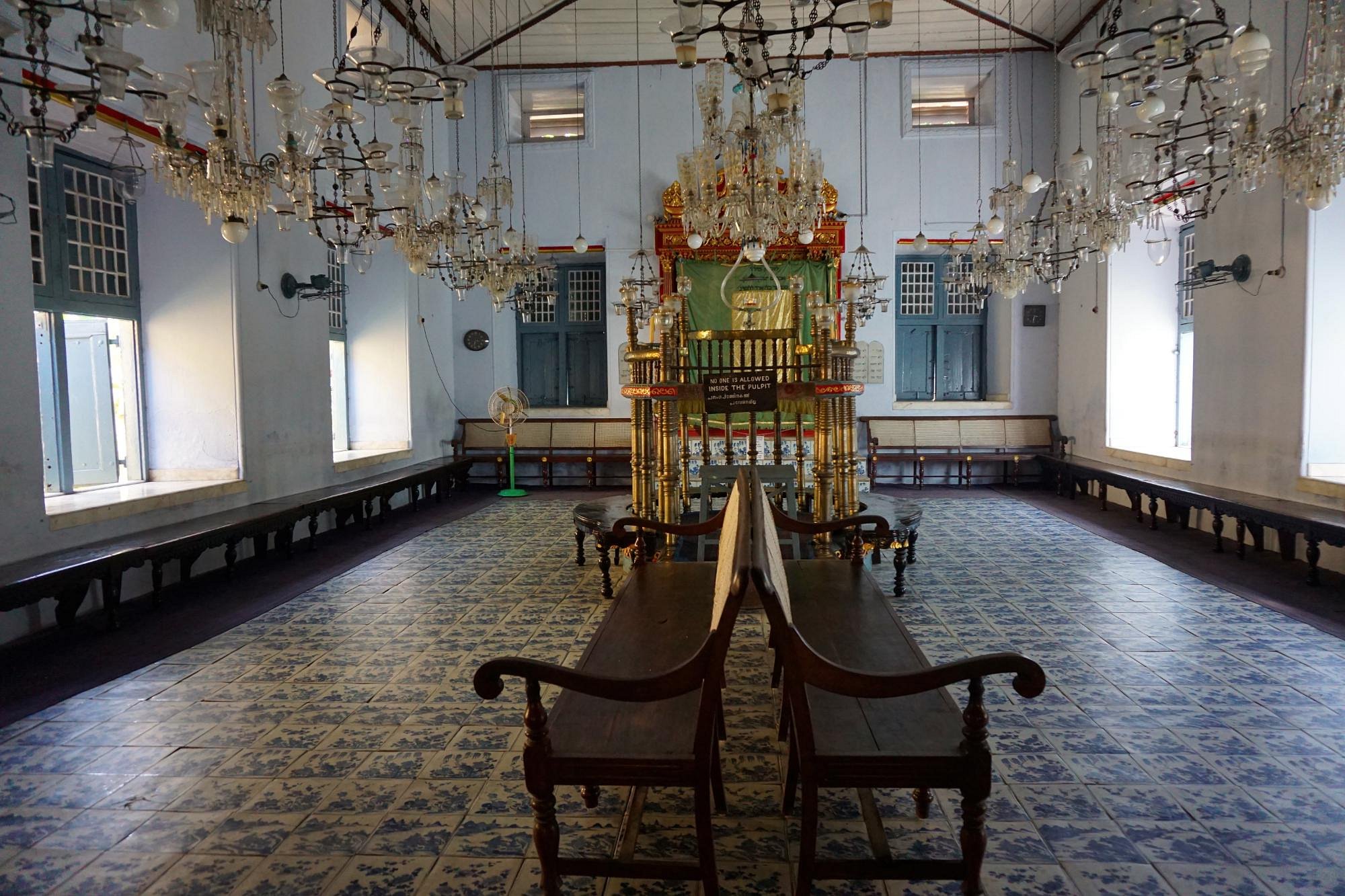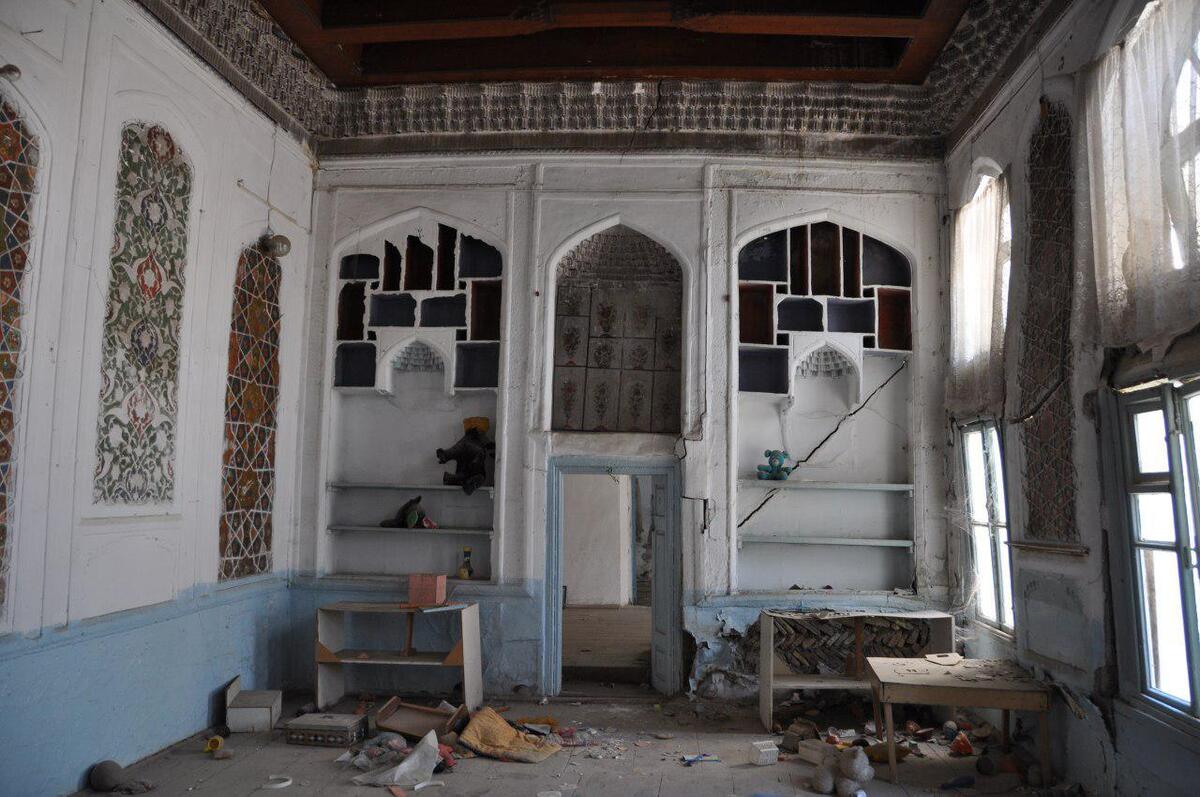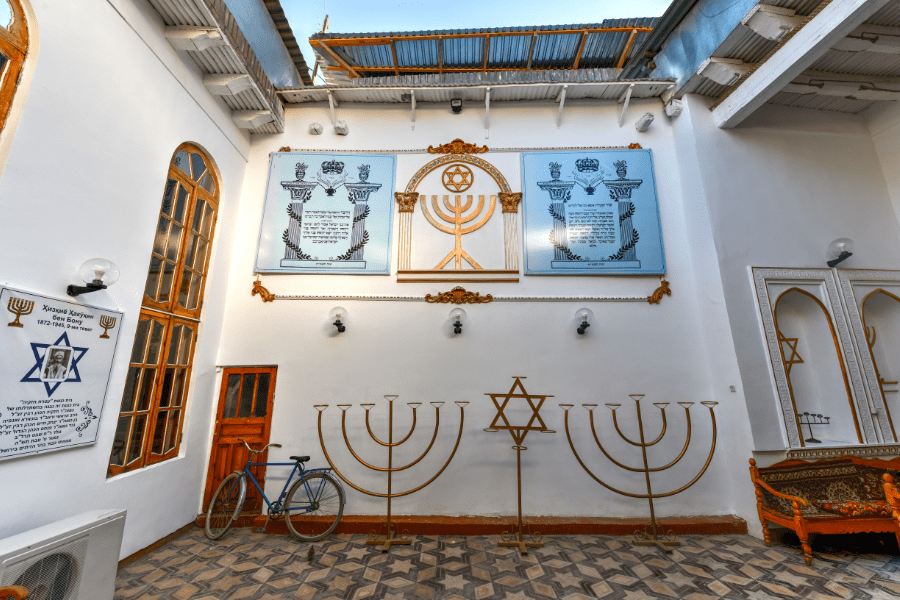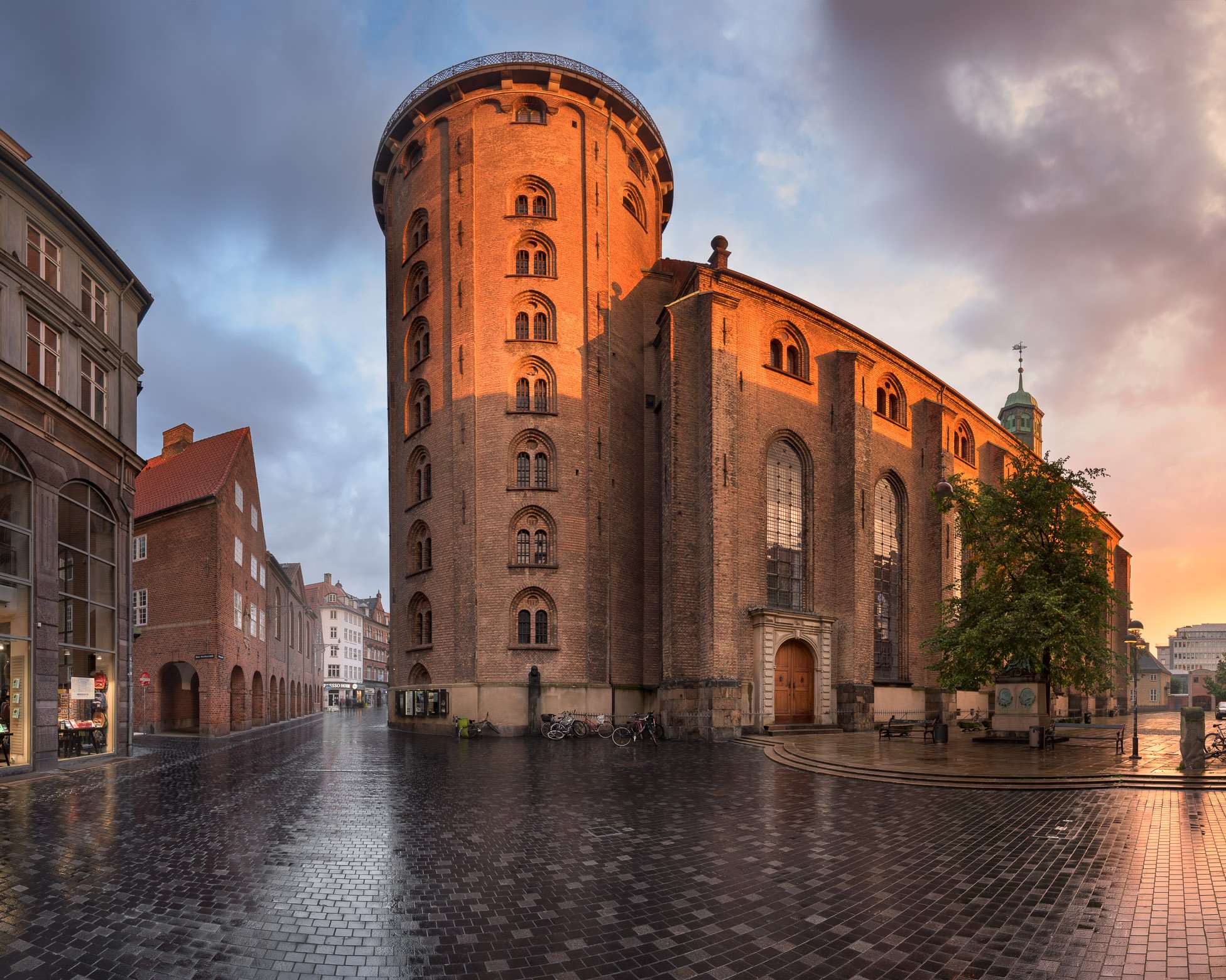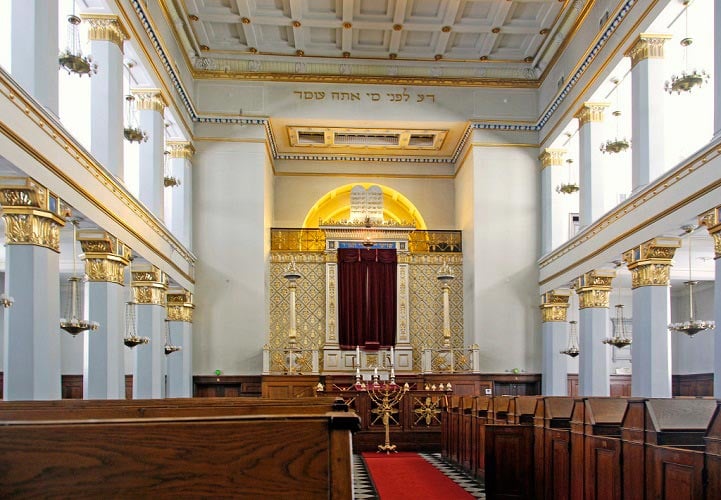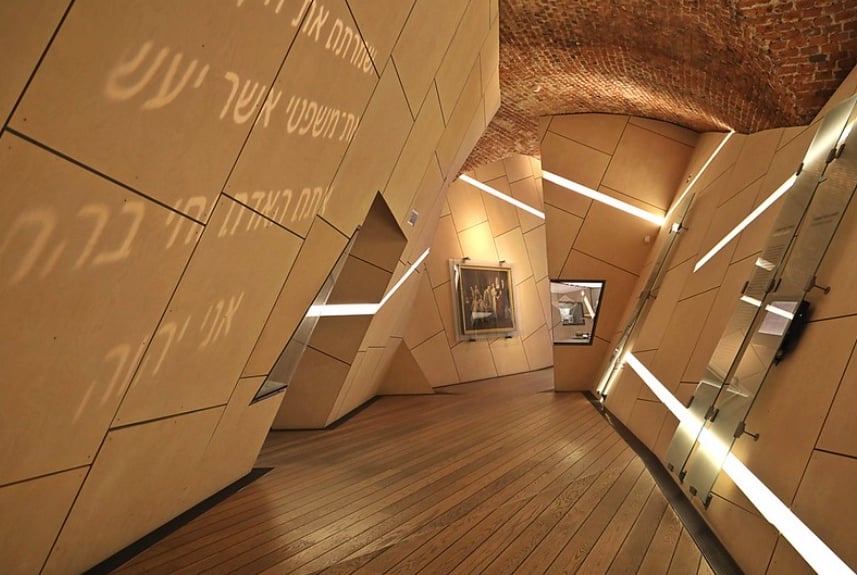The resting place of the Yemenite-born scholar known as the Kochi Kabbalist is not in the cemetery but on a narrow side street off Synagogue Lane—also called Jew Street. After his death in 1615, stories of his miraculous deeds circulated in the community, including one stating that he could fly through the air to reach home in time for Shabbat prayers. The tomb has become a sacred pilgrimage site for locals of all religions. It has been painted aqua and white, its Hebrew inscription and crown daubed a saffron color.
Site Tag: Attractions
Chendamangalam Synagogue and Museum
The Chendamangalam Synagogue is one of the oldest known synagogues built by the Malabar Jews, in Chendamangalam, a village in the Ernakulam district of the coastal state of Kerala. It is dated to 1100 A.D, though the synagogue structure itself dates to 1420 A.D or 1614 A.D., making it the oldest synagogue in the Commonwealth of Nations. A tombstone recovered from Shingly was stored in this synagogue and is presently on display in the courtyard in front. This tombstone with the inscription of Sarah bat Israel is the oldest Jewish relic found in India, dating to 1270 A.D.
After the entire congregation made aliyah to Israel in 1950s, the synagogue was defunct for decades. Today it serves as a Kerala Jews Lifestyle Museum for the Muziris Project, a conservation project by the Government of Kerala. The synagogue has been restored and has an exhibit open to visitors from 9:30 to 5:00 during the week. A tombstone recovered from Shingly was stored in this synagogue and is presently on display in the courtyard in front. This tombstone with the inscription of Sarah bat Israel is the oldest Jewish relic found in India, dating to 1270 A.D.
The Chendamangalam Synagogue Musuem showcases the lives and rituals of Kerala Jews who were firm believers and lived in close contact with the local society. The synagogue is located inside high walls that surround it. The wall in front is as high as the front elevation. When you cross the front door, it is the Azara, with a vast prayer room behind it. The balcony that projects into the prayer room is the second Bimah (elevated platform for Torah reading). Supporting it are two stone pillars with intricate carvings. The position of the Ark is on the wall across the door, and it is a beautiful piece of art in teak with carved images. On the wooden planks on the roof are carved images of lotus that are painted. On both sides of the Bimah are two rows of bench. There is a spiral staircase to climb up to the second Bimah.
Jew Town
Historic Jew Town, the heart of the once-thriving Cochin Jewish community, is known for its old-world charm and 16th-century Paradesi Synagogue. Quaint shops around Synagogue Lane and Jew Town Road sell antiques, carvings, and vintage collectibles, along with Keralan crafts and aromatic spices. Laid-back outdoor cafes and artsy eateries, some in heritage buildings, serve local specialties and Western fare.
The neighborhood was once lined with Jewish homes and shops that are now mostly owned by Muslims. Some of the wrought-iron windows and outer walls retain their Star of David decorations, some side by side with swastikas, the Indian good-luck symbol that the Nazis co-opted. Souvenir and antique shops beckon with names like Café Jew Town and Shalom. A.B. Salem Street, which leads to the cemetery, is padlocked behind a gate. The street is named for a community leader, lawyer, teacher and follower of Mahatma Gandhi.
Images Credit: Chendamangalam Synagogue, Paradesi Synagogue and Kadavumbagam synagogue (Ernakulam) to the Ministry of Tourism Kerala.
Kadavumbagam Synagogue
In a most unlikely setting, the Kadavambagam synagogue in Ernakulam (a 45-minute drive away from Jew Town) sits in the midst of a crowded market, hidden behind a plant and aquarium shop called Cochin Blossoms that incorporates hamsas on its sign.
The current synagogue is the restored oldest synagogue of the Malabar Jews, with a Sefer Torah scroll and offering occasional services. It was established in 1200 CE and restored several times through the centuries on the same site. It is modeled on the earliest synagogue of the Malabar Jews at Muziris from the ancient times of Mediterranean sea trade with Kerala. The earliest synagogue of the ancient Malabar Jews is today submerged in the sea following the gradual rise of sea level over several millennia.
Although the Chendamangalam Synagogue is the oldest surviving synagogue structure in Kerala and Indian subcontinent (established in 1166 CE), its Torah scrolls were taken to Israel by it congregation in 1952. This makes the Kadavumbhagham Ernakulam synagogue the oldest Malabar Jewish synagogue today (since its restoration in 2018) with a Torah scroll that is occasionally used for services. The Paradesi Sephardic synagogue at Mattancherry also has Torah scrolls but it was established much later in 1568.
The Sabbath services at the Kadavumbhagam Ernakulam synagogue continued till 1972 when a large portion of the community immigrated to Israel by 1972 along with the Torah scrolls. For decades, the Kadavumbhagham Synagogue at Ernakulam remained without any Sabbath services and without a Sefer Torah. Today the synagogue is nested within the bustling market at Ernakulam with a thriving aquarium in the front area near the synagogue operating since 1985. After much effort, the Kadavumbhagham Ernakulam synagogue was restored and the Sefer Torah brought back to the synagogue in 2018 after 46 years. Today there are only two synagogues in Kochi that have Torah scrolls: the Paradesi synagogue of the Sephardic Jews in Mattancherry and the Kadavumbhagham Ernakulam synagogue of the ancient Malabar Jews.
Paradesi Synagogue
The Paradesi Synagogue aka Mattancherry Synagogue is a synagogue located in Mattancherry Jew Town, a suburb of the city of Kochi, Kerala, in India. It was built in 1568 A.D. by Samuel Castiel, David Belila, and Joseph Levi for the flourishing Paradesi Jewish community in Kochi. The Malabari Jews or Yehudan Mappila (also known as Cochin Jews) formed a prosperous trading community of Kerala, and they controlled a major portion of worldwide spice trade.
In 1568, Paradesi Jews constructed the Paradesi Synagogue adjacent to Mattancherry Palace, Cochin, now part of the Indian city of Ernakulam, on land given to them by the Raja of Kochi. The first synagogue in India was built in the 4th century in Kodungallur (Cranganore) when the Jews had a merchantile role in the South Indian region (now called Kerala) along the Malabar coast. When the community moved to Kochi in the 14th century, it built a new synagogue there.
Today the Paradesi Synagogue is the only functioning synagogue in Kochi with a minyan (though this minyan must be formed with Jews from outside Kochi, as the number who still reside there is not sufficient). In conformity with the Hindu, St Thomas Christian or Syrian Mappila and Muslim Mappila traditions of Kerala, the worshippers are required to enter the Paradesi Synagogue barefoot. Other facets which are unique to the Cochin Jewish community, and which are results of Hindu influence, include special colours of clothing for each festival, circumcision ceremonies performed at public worship, and distribution of grape-soaked myrtle leaves on certain festivals.
The Paradesi Synagogue has the Scrolls of the Law, several gold crowns received as gifts, many Belgian glass chandeliers, and a brass-railed pulpit. It houses the 10th-century copper plates of privileges given to Joseph Rabban, the earliest known Cochin Jew. These two plates were inscribed in Old Malayalam by the ruler of the Malabar Coast. The floor of the synagogue is composed of hundreds of Chinese, 18th-century, hand-painted porcelain tiles, each of which is unique.
Traditional Bukharian Houses in The Old Jewish Mahalla
In the Middle Ages, Bukhara became the heart of Jewish life in central Asia, as Jews from other communities in the region settled there. By the turn of the twentieth century, the Jewish community of Bukhara was the largest among a network of Jewish minorities in Uzbek cities including Tashkent, Samarkand, Kokand, Andijan, Marghilan, and Navoi. Bukharian Jews were active in establishing trade connections with the Russian Empire and held positions in law, medicine, and local government, while others were well-known musicians, actors, and dancers. Following the Russian Revolution and throughout the Holocaust, Jews from Eastern Europe continued to immigrate to Bukhara to avoid persecution.
Less than 200 Bukharian Jews remain in the old mahallah. The vast majority left Bukhara for Israel and the United States following the dissolution of the Soviet Union in 1991. Due to this mass exodus and the development of new building techniques, the traditional houses are now under threat of disappearance and are subject to alterations insensitive to their historical significance. The houses were included on the 2020 World Monuments Watch to encourage the documentation and creation of sustainable urban conservation standards for the adaptive reuse of the Bukharian Jewish Houses. – Description and photos by the World Monuments Fund
Bukhara Synagogue
The oldest part of the synagogue was called “Kanisa Mulla Mani”, that is, the synagogue named after Mulla Mani. Mullah Mani is a venerable Jew who was a foreman in this synagogue in the 20s of the 20th century.
Before the construction of the first synagogue, Jews prayed in the same room with Muslims in a mosque called “Mahak-i Attari.” According to one version, Jews prayed with Muslims at the same time, but in different corners. According to another, Jews came there only at the end of Muslim prayers. This can explain the custom, which exists among Bukharian Jews, to end the morning prayer with the words “Shalom Aleihom.”
There is a version that the resettlement of Jews in the Jewish quarter is associated with the construction of a synagogue. Before the construction of the synagogue, Jews lived near today’s Lyabi-Khauz, at a local Bazaar market. In an effort to concentrate around the prayer house, they gradually moved to this quarter, where a synagogue was built, so that not a single Jewish family remained in the Bazaar.
According to another version, the Jews have been living in Jewish Mahallah since the time of their resettlement from the central regions of Persia. They say that this area was occupied by Muslims, and when it was empty, the quarters located here began to collapse, and the ruler of Bukhara gave this place to the Jews who came from Jerusalem in the interests of trade.
The synagogue, in the Mahalli Kukhma quarter, with a 300-year history, was closed by the Soviet authorities in 1940. And only in 1945, at the insistent request of the population, the former building of the synagogue was returned to the Jewish community, which functions to this day.
Image attribution: Adam Jones from Kelowna, BC, Canada, CC BY-SA 2.0
Jewish walking tour
On this Jewish-themed city tour of Copenhagen, you will hear about the amazing history of Danish Jewry, from when the first Jews were invited by the King Christian 4th in 1622, up to the present time.
A specially trained Jewish guide will share his/her personal stories about the miraculous rescue of more than 7,000 Danish Jews during the Nazi occupation in October 1943 and about Jewish life today.
While walking through the old city centre of Copenhagen, we will of course also tell you about the many landmarks we pass on our way. This includes:
- The Copenhagen Synagogue
- City Hall
- The Copenhagen University
- The Parliament
- Christiansborg Palace
- The Round Tower
- The Old Stock Exchange
- The Pedestrian Mall ”Ströget”
- The Danish-Jewish Museum
Great Synagogue of Copenhagen
The Great Synagogue of Copenhagen is considered to be one of the most beautiful Synagogues in Europe. It was designed by architect G.F. Hetsch in semi-oriental style and constructed from 1830-1833.
The Great Synagogue of Copenhagen was designed by architect G.F.Hetsch in semi-oriental style. The building was completed in 1833, replacing all the small Synagouges around in the old city. Abraham Alexander Wolff who became chief-Rabbi in 1825 took the initiative to start the construction, which needed royal approval.
Since 1833 the Great Synagogue of Copenhagen, has been the heart and mind for the Jewish Community in prosperous times in the 1800-1900 hundreds, in the the darkest times during WW2.
The building was compleately renovated in 2016-2017 and is considered to be one of the most beautiful Synagogues in Europe.
Danish Jewish Museum
The Danish Jewish Museum in Copenhagen opened in 2004, located in the Royal Library Garden netx to the Parliament. In the museum you can experience 400 years of Jewish life in Denmark. The museum was designed by world-famous architect Daniel Libeskind and has many similarities with the Jewish Museum in Berlin.
The Jewish Museum is located in the beautiful Royal Library Garden next to the Danish Parliament, Christiansborg Castle. The building is an ancient boat house belonging to king Christian 4th who invited the first Jews to settle in the Danish kingdom in 1622, 400 years ago.
Daniel Libeskind’s characteristic architecture gives you an enthralling universe of the Danish Jewish culture, and the exhibition is put together in harmony with his architecture.
The emblem of the museum interior is the Hebrew word ‘Mitzvah’, which can be translated as an obligation or good deed.
Daniel Libeskind based his architecture on the outstanding deed of the Danish people who helped saving more than 97% of the Jewish population during WW2.
This site has been visited by Queen Margrethe of Denmark and Primeminister Lars Lökke Rasmussen.
